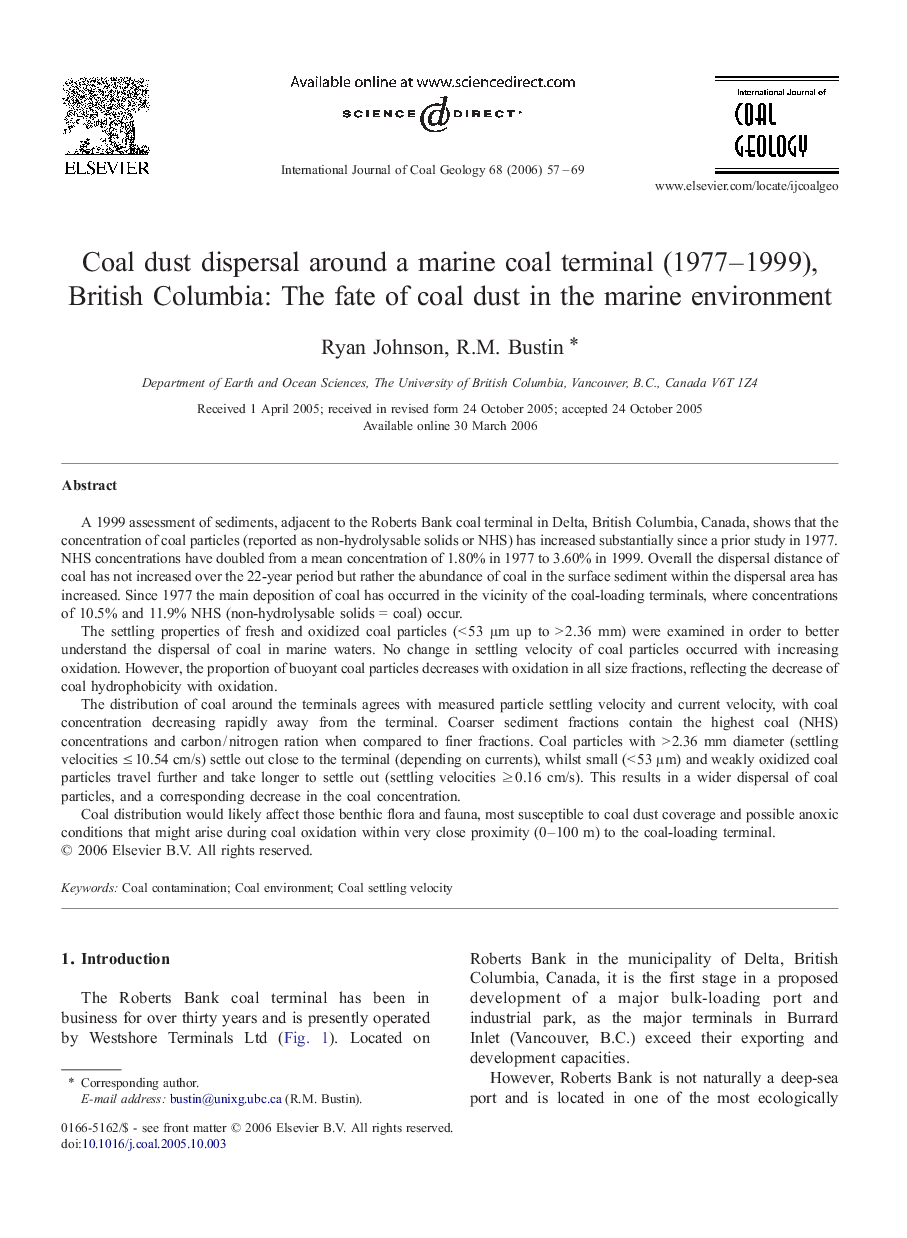| کد مقاله | کد نشریه | سال انتشار | مقاله انگلیسی | نسخه تمام متن |
|---|---|---|---|---|
| 1754318 | 1522665 | 2006 | 13 صفحه PDF | دانلود رایگان |

A 1999 assessment of sediments, adjacent to the Roberts Bank coal terminal in Delta, British Columbia, Canada, shows that the concentration of coal particles (reported as non-hydrolysable solids or NHS) has increased substantially since a prior study in 1977. NHS concentrations have doubled from a mean concentration of 1.80% in 1977 to 3.60% in 1999. Overall the dispersal distance of coal has not increased over the 22-year period but rather the abundance of coal in the surface sediment within the dispersal area has increased. Since 1977 the main deposition of coal has occurred in the vicinity of the coal-loading terminals, where concentrations of 10.5% and 11.9% NHS (non-hydrolysable solids = coal) occur.The settling properties of fresh and oxidized coal particles (< 53 μm up to > 2.36 mm) were examined in order to better understand the dispersal of coal in marine waters. No change in settling velocity of coal particles occurred with increasing oxidation. However, the proportion of buoyant coal particles decreases with oxidation in all size fractions, reflecting the decrease of coal hydrophobicity with oxidation.The distribution of coal around the terminals agrees with measured particle settling velocity and current velocity, with coal concentration decreasing rapidly away from the terminal. Coarser sediment fractions contain the highest coal (NHS) concentrations and carbon / nitrogen ration when compared to finer fractions. Coal particles with > 2.36 mm diameter (settling velocities ≤ 10.54 cm/s) settle out close to the terminal (depending on currents), whilst small (< 53 μm) and weakly oxidized coal particles travel further and take longer to settle out (settling velocities ≥ 0.16 cm/s). This results in a wider dispersal of coal particles, and a corresponding decrease in the coal concentration.Coal distribution would likely affect those benthic flora and fauna, most susceptible to coal dust coverage and possible anoxic conditions that might arise during coal oxidation within very close proximity (0–100 m) to the coal-loading terminal.
Journal: International Journal of Coal Geology - Volume 68, Issues 1–2, 1 August 2006, Pages 57–69